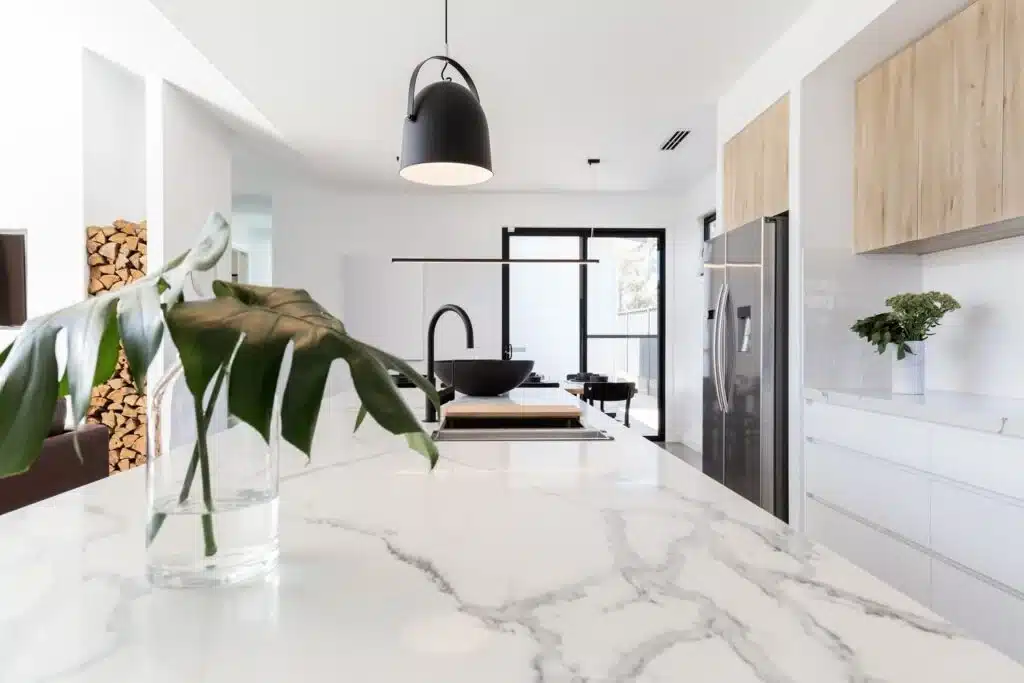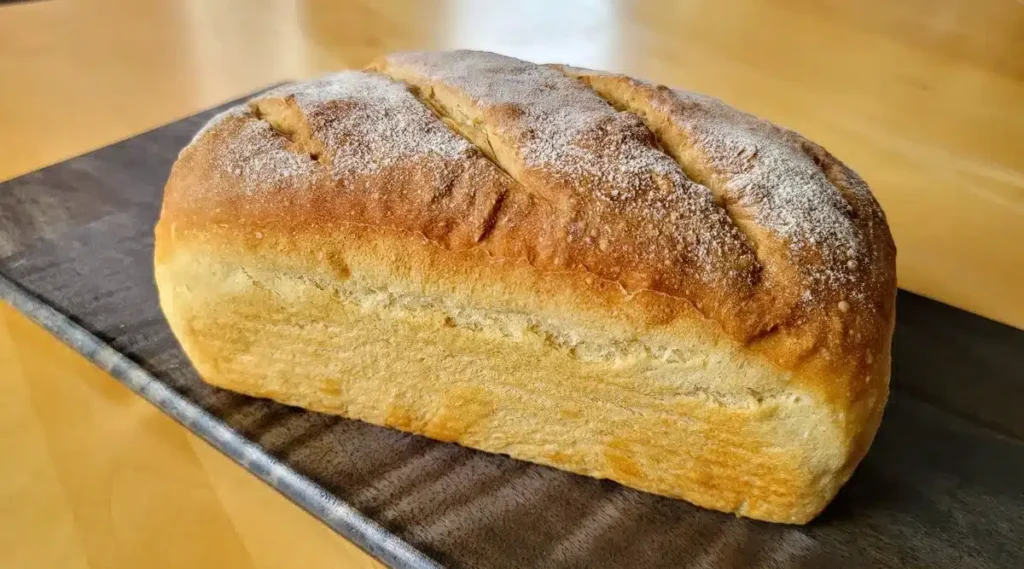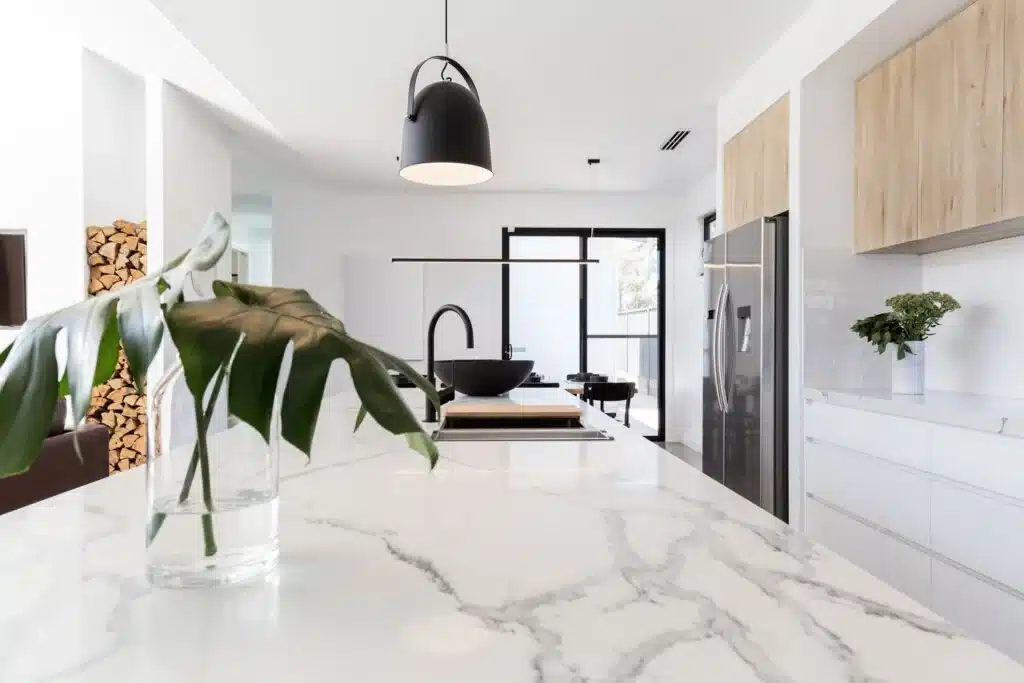When people move into a new kitchen, they usually put all the things they use often right on the counter.
Bread? Out in the open. Knife block? Front and center. Coffee pods, fruit bowl, toaster, blender—all easy to reach.

It sounds reasonable: if you can see it, you’ll use it. But convenience often turns into clutter. In some cases, it can even make your food or tools wear out faster. A crowded counter also looks messy, is harder to clean, and can be less sanitary than you think.
Kitchen design and food safety experts agree—some items should be stored away. A counter should have enough space to work on at any time. Here are 10 common counter items, why they’re a problem, and better ways to store them.
1. Bread
The problem: Bread goes bad quickly when exposed to the wrong conditions. In warm, humid air, mold grows fast. In dry climates, bread can go stale in less than two days. Paper bags let in too much air, while plastic bags can trap moisture and speed up mold growth.

Better storage: Use a bread box with built-in ventilation to control humidity. Wrap bread in foil or plastic and refrigerate if you need it to last longer. If you buy or bake in bulk, slice and freeze extras, then thaw as needed.
2. Knife Blocks
The problem: Wooden knife blocks collect dust, grease, and food particles over time. If you don’t clean them and the knives regularly, bacteria can build up inside. They also take up a lot of counter space.
Better storage: Mount a magnetic knife strip on the wall for easy access and better air circulation. Or use a flat drawer insert to keep knives hidden and protected.
3. Small Appliances You Rarely Use
The problem: Most kitchens have appliances that get used only a few times a year. Left on the counter, they gather dust and grease, and take up valuable space.
Better storage: Store seasonal or rarely used appliances—like slow cookers or waffle makers—in a cupboard or pantry. Keep only daily essentials like a toaster or coffee maker on the counter. Rotate appliances in and out as needed.
4. Fruits and Vegetables That Spoil Quickly
The problem: Light and temperature changes can make produce ripen and spoil faster. Avocados can overripen in a day. Onions release gas that makes potatoes sprout faster. Sunlight ruins the texture and flavor of tomatoes.
Better storage: Keep avocados, onions, and potatoes in a cool, dark pantry. Bananas and apples can stay in a fruit bowl for display. Once tomatoes are ripe, refrigerate them if you’re not eating them right away.
5. Spices
The problem: Heat, humidity, and sunlight break down the oils that give spices their flavor. A spice jar left near the stove can lose its taste within months.
Better storage: Keep spices in airtight containers in a cool, dark place—like a drawer or cabinet away from heat. Label jars clearly so you can find what you need without leaving them out.
6. Mail and Paperwork
The problem: Bills, forms, and notes often pile up on counters. This creates clutter and increases the chance of losing something important. Papers can also bring bacteria from outside into your cooking area.
Better storage: Set up a mail station somewhere else—like in a drawer, on a small desk, or with a wall organizer. Sort papers daily to keep piles from building up.
7. Cutting Boards
The problem: Leaving cutting boards stacked on the counter attracts crumbs and grease. If wooden boards stay damp after washing, they can warp.

Better storage: Store boards vertically in a cabinet with slots that allow airflow. This keeps them dry, flat, and out of sight.
8. Pet Food and Bowls
The problem: Pet food on the counter can leave odors and attract pests like ants or mice. Pet dishes also risk cross-contaminating food areas.
Better storage: Keep pet food in sealed containers in a pantry or cupboard. Place bowls on a washable mat on the floor, away from cooking areas.
9. Glass Jars of Coffee Beans or Pods
The problem: Coffee loses flavor when exposed to light, air, and moisture. Even in jars, beans or pods can taste stale after just a few days.
Better storage: Store coffee in airtight, opaque containers in a cool, dark place. Keep pods in a closed drawer or container to stay fresh longer.
10. Cookbooks
The problem: Books near the stove or sink are exposed to steam, grease, and spills. Even small splashes can warp the pages.
Better storage: Keep cookbooks in a cabinet or on a nearby shelf. When cooking, take a photo or print the recipe, or use a tablet stand.
Why Clearing Your Counter Matters
Removing these items can make a big difference:
- Looks bigger: Less clutter makes the space feel larger.
- Easier to clean: Fewer items to move when wiping surfaces.
- Better food safety: Less chance of spoilage and cross-contamination.
- Less stress: Cooking feels calmer in a neat space.
You don’t need a kitchen remodel to see the change. Just knowing what not to leave out can make your kitchen look and feel brand new.
